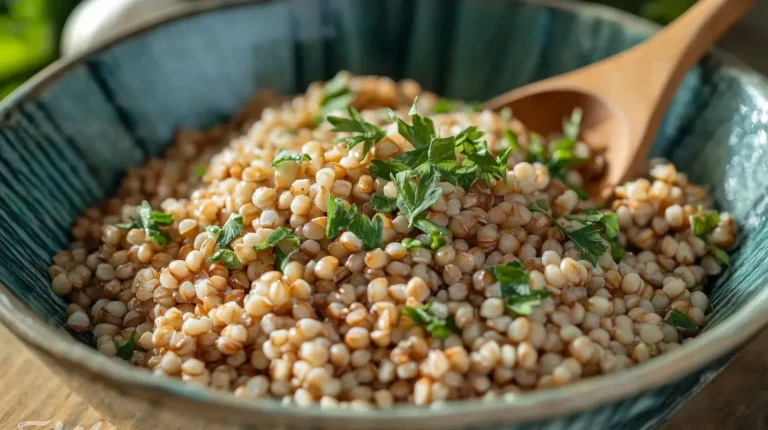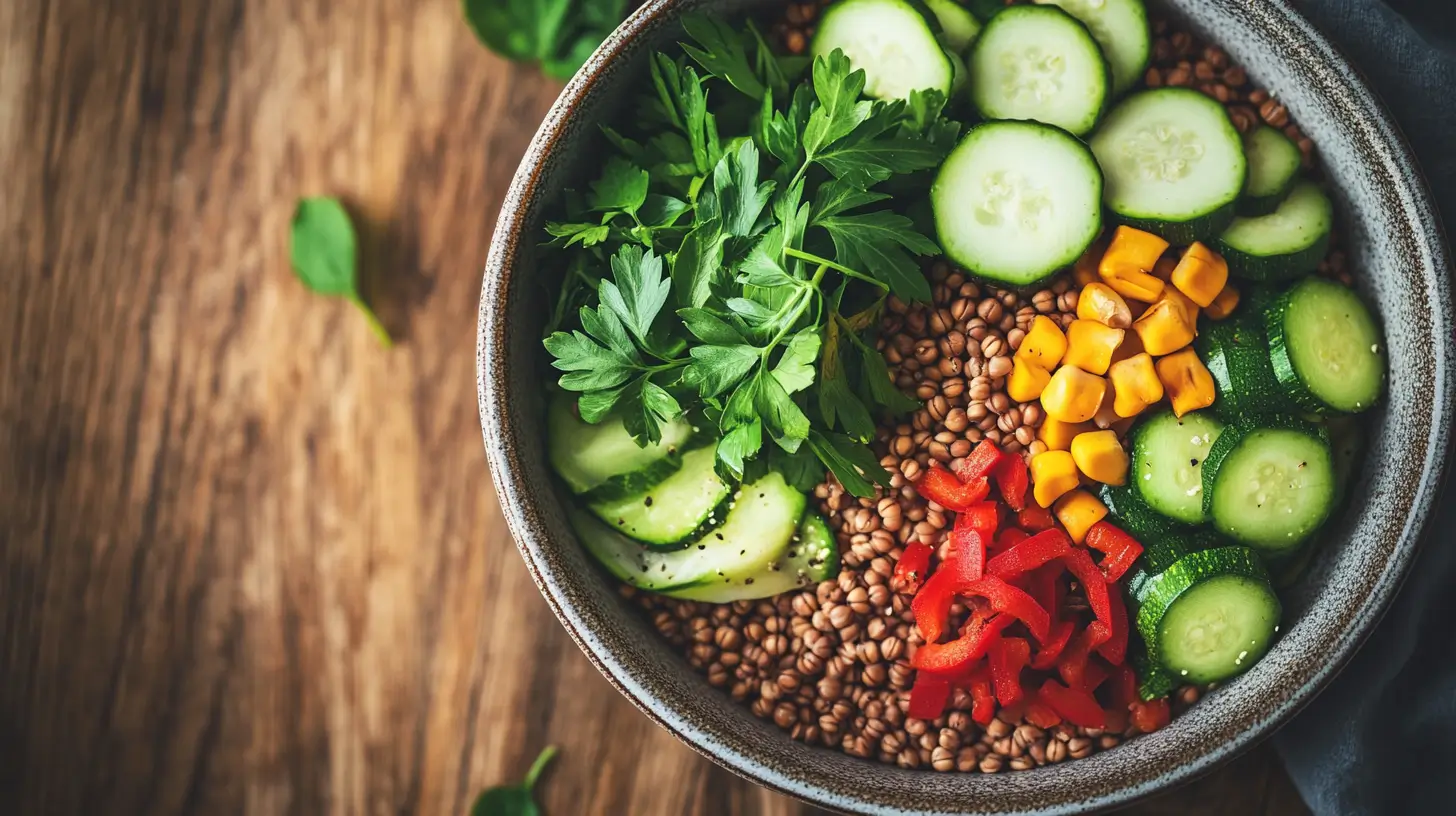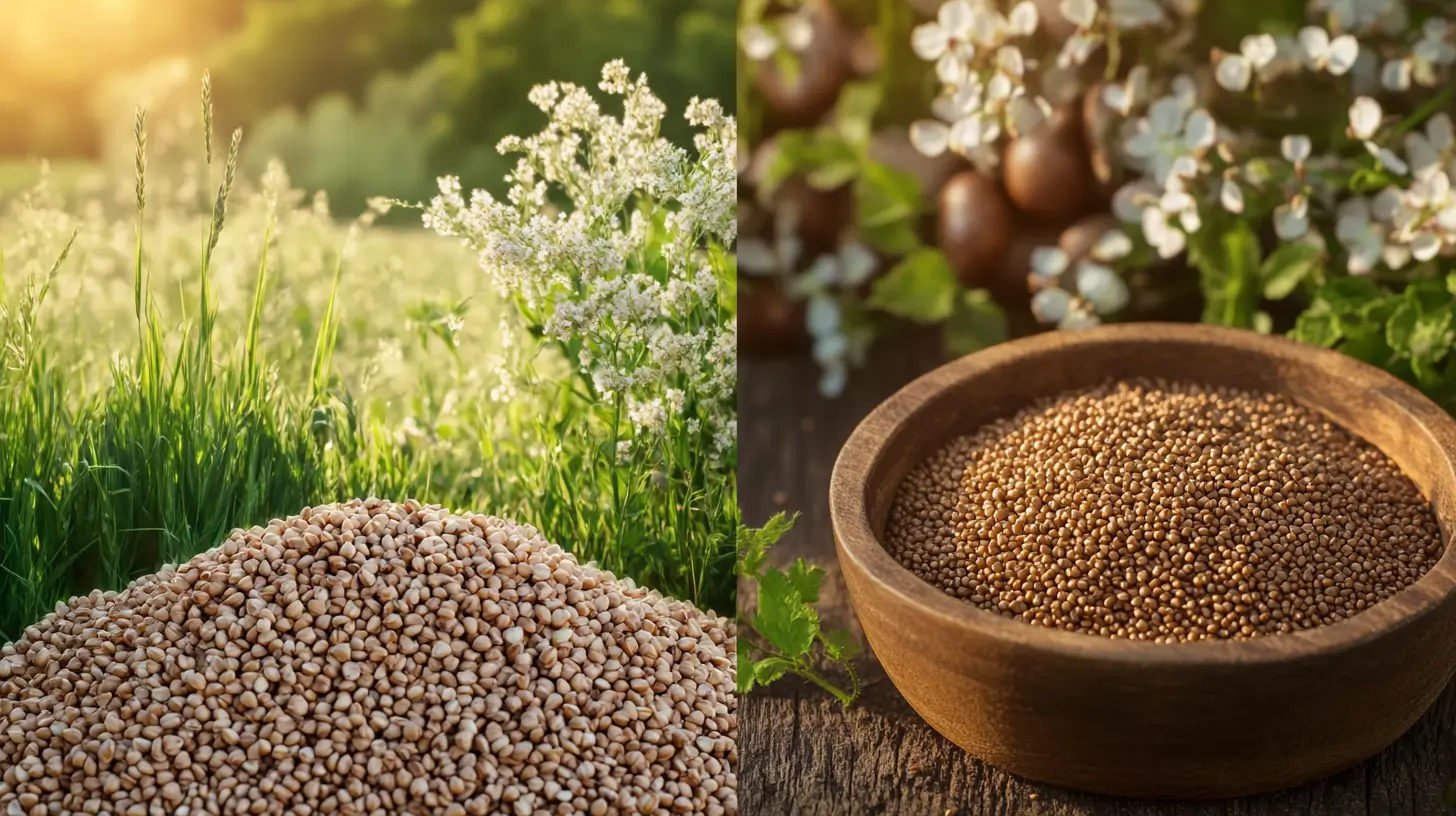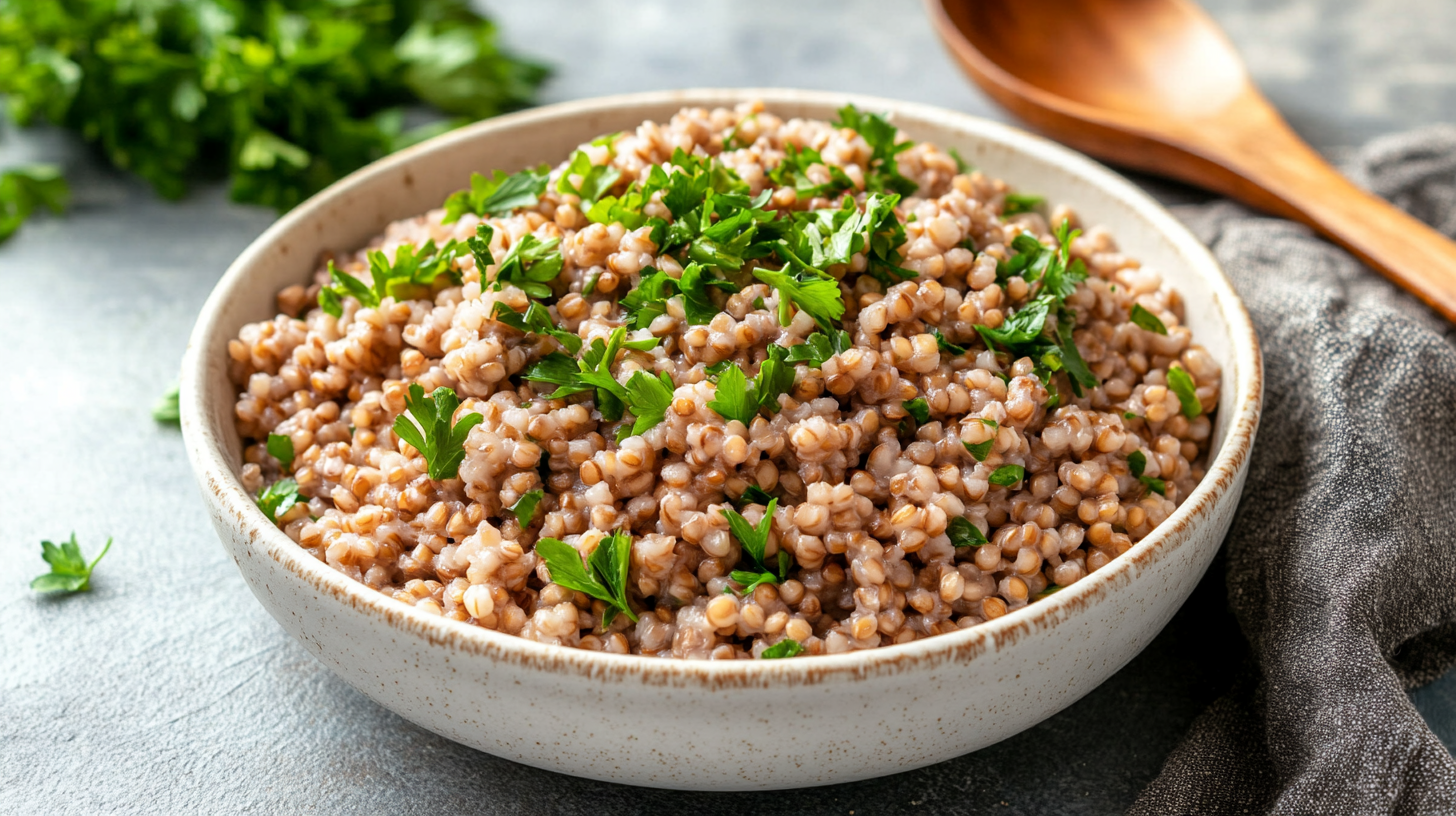Understanding the nutritional profile of foods is essential for maintaining a healthy diet, especially for those monitoring their carbohydrate intake. Among the many grains and pseudo-grains available, kasha often sparks curiosity, particularly regarding its carb content. Is kasha low in carbs? This article dives deep into kasha’s nutritional makeup, comparing it to other grains and discussing its suitability for various dietary preferences. By the end, you’ll have a thorough understanding of how kasha fits into low-carb lifestyles and health-focused eating plans.
What is Kasha?
Kasha is a term often used to describe toasted buckwheat groats, though in some cultures, it refers to a variety of grain-based porridges. As a gluten-free pseudo-grain, kasha is not technically a grain but rather a seed. Its unique nutty flavor and versatility make it a staple in many traditional dishes, particularly in Eastern European cuisines.
This seed is renowned for its nutritional density. Packed with essential nutrients, kasha provides a rich source of protein, fiber, and various minerals. However, when it comes to carbs, many wonder, is kasha low in carbs? The answer depends on serving size, preparation, and its comparison to other dietary staples.
The Importance of Understanding Carb Content in Foods
Carbohydrates are a critical macronutrient, providing energy for the body. However, for those following specific diets such as ketogenic or low-carb plans, monitoring carb intake is crucial. Misjudging the carb content of foods can hinder progress toward health or weight goals.
When evaluating kasha, understanding its carbohydrate profile helps determine its place in low-carb diets. Knowing whether kasha is low in carbs can guide informed decisions, enabling individuals to balance their meals effectively and meet their nutritional needs without exceeding carb limits.
Nutritional Composition of Kasha
Overview of Kasha’s Macronutrients
Kasha is a nutrient-dense food that offers a balanced mix of macronutrients. A typical 100-gram serving of cooked kasha contains:
- Calories: Approximately 92
- Protein: 3.4 grams
- Carbohydrates: 19.9 grams
- Fiber: 2.7 grams
- Fat: 0.6 grams
The combination of protein and fiber supports satiety, making it a filling addition to meals. However, the primary question remains: is kasha low in carbs? While kasha’s carbohydrate content is significant, its fiber partially offsets the net carbs, making it a reasonable choice for moderate-carb diets.
Carbohydrate Content in Kasha Compared to Other Grains
When compared to grains like rice or quinoa, kasha’s carbohydrate profile stands out for its moderate levels:
- White rice: Approximately 28 grams of carbs per 100 grams
- Quinoa: Around 21 grams of carbs per 100 grams
- Kasha: 19.9 grams of carbs per 100 grams
These figures show that while kasha isn’t the lowest-carb option, it contains fewer carbs than many traditional grains. For those wondering is kasha low in carbs, this comparison provides valuable context.
Carbs in Kasha: An In-Depth Look
How Many Carbs Are in a Typical Serving?
A single cup of cooked kasha (roughly 170 grams) contains about 32 grams of carbohydrates, including 5 grams of fiber. This results in approximately 27 grams of net carbs per serving. This moderate carbohydrate content can fit within low-carb diets when portion sizes are carefully managed.
Factors Affecting Carb Levels in Kasha
Several factors influence kasha’s carb content:
- Cooking method: Adding fats like butter may slightly reduce the glycemic impact.
- Serving size: Larger portions naturally increase carb intake.
- Combination with other foods: Pairing kasha with high-fiber vegetables can help balance its glycemic load.
For those assessing is kasha low in carbs, these variables are essential considerations for maintaining dietary goals.
Kasha and Low-Carb Diets
Can Kasha Fit into a Ketogenic Diet?
The ketogenic diet requires keeping daily carb intake below 20-50 grams, which makes kasha challenging to include. With 27 grams of net carbs per serving, kasha may not be suitable for strict keto. However, for cyclical or targeted keto approaches, small portions of kasha could occasionally fit.
Best Practices for Including Kasha in Low-Carb Meal Plans
To enjoy kasha while maintaining a low-carb focus:
- Limit servings to ½ cup cooked.
- Pair kasha with high-fat, low-carb ingredients like avocado or olive oil.
- Include plenty of low-carb vegetables to increase volume without adding excess carbs.
These strategies ensure that you can explore whether kasha is low in carbs for your specific dietary needs.
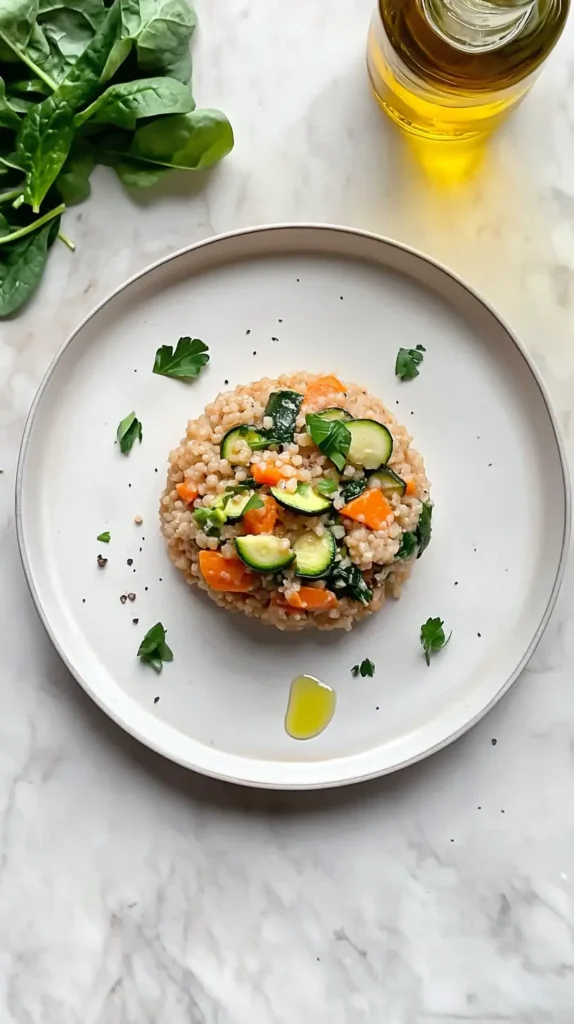
Comparing Kasha with Other Grains
Kasha vs. Rice
When comparing kasha to white rice, kasha offers fewer carbs per serving and higher fiber, making it a more nutrient-dense choice. For those wondering is kasha low in carbs, it emerges as a favorable option compared to rice.
Kasha vs. Quinoa
Both kasha and quinoa are rich in nutrients, but kasha has slightly fewer carbs. While quinoa contains around 21 grams of carbs per 100 grams, kasha’s 19.9 grams give it a slight edge for low-carb dieters.
Kasha vs. Bulgur
Bulgur wheat is another contender, with about 18 grams of carbs per 100 grams. While bulgur has fewer carbs than kasha, it is not gluten-free, giving kasha an advantage for those avoiding gluten.
Health Benefits of Kasha
Fiber Content and Digestive Health
Kasha’s 2.7 grams of fiber per 100 grams promote digestive health by supporting regular bowel movements and feeding beneficial gut bacteria. This fiber also moderates blood sugar spikes, which is valuable for those questioning is kasha low in carbs.
Potential Heart Health Benefits
Kasha is rich in magnesium, which supports heart health by regulating blood pressure and maintaining normal heart rhythm. Its fiber content also contributes to reduced cholesterol levels.
Gluten-Free Advantages
For individuals with gluten intolerance or celiac disease, kasha serves as a safe and nutritious alternative to traditional grains. This makes it an excellent choice for gluten-free diets while addressing concerns about carb content.
Kasha in Popular Diets
Kasha in Paleo and Whole30 Diets
Due to its classification as a pseudo-grain, kasha is not typically included in strict Paleo or Whole30 diets. However, it can be a valuable addition to modified versions of these plans. When carb limits are more flexible, kasha offers a nutrient-rich option to enhance dietary variety.
Compatibility with Plant-Based Diets
For vegetarians and vegans, kasha is a valuable source of plant-based protein and essential amino acids. Although not low in carbs per se, its nutrient density makes it a smart choice for balanced plant-based meals.
How to Cook Kasha for a Low-Carb Diet
Preparing Kasha with Low-Carb Ingredients
Cooking kasha for a low-carb diet involves combining it with ingredients that complement its nutritional profile while minimizing overall carb content. Here are some tips:
- Use healthy fats: Add butter, ghee, or olive oil to enhance flavor and satiety without increasing carbs.
- Incorporate low-carb vegetables: Bell peppers, spinach, zucchini, and mushrooms can bulk up dishes without adding many carbs.
- Choose low-carb seasonings: Use spices like turmeric, paprika, and cumin for flavor without sugar-laden sauces or marinades.
For those asking is kasha low in carbs, these preparation techniques help make it a better fit for low-carb diets while retaining its versatility.
Recipes for Low-Carb Kasha Dishes
Here are a few ideas for incorporating kasha into low-carb meal plans:
- Kasha and Vegetable Stir-Fry: Sauté kasha with zucchini, spinach, and mushrooms in garlic and olive oil.
- Kasha Salad: Combine chilled kasha with cucumbers, cherry tomatoes, and a lemon-tahini dressing.
- Kasha Breakfast Bowl: Mix cooked kasha with almond milk, chia seeds, and a small handful of berries for a nutrient-packed breakfast.
These recipes showcase how kasha can be prepared to align with low-carb eating, offering variety and flavor while addressing concerns about is kasha low in carbs.
Myths About Carbs in Kasha
Misconceptions About Kasha’s Carb Levels
A common misconception is that all grains, including kasha, are inherently high in carbs and unsuitable for low-carb diets. While kasha does contain carbohydrates, its relatively lower carb content compared to rice or pasta makes it a more flexible option.
Additionally, the is kasha low in carbs debate often overlooks its fiber content. Fiber reduces the net carb count, making kasha more suitable for moderate-carb plans than it initially appears.
Addressing Common Low-Carb Diet Myths
Some low-carb diet myths can lead to unnecessary dietary restrictions. For example:
- Myth 1: All carbs cause blood sugar spikes. Truth: Complex carbs like those in kasha digest slowly, causing a gradual rise in blood sugar.
- Myth 2: Low-carb diets mean no grains. Truth: Small portions of nutrient-dense options like kasha can fit into many low-carb meal plans.
Understanding these myths ensures that you can better assess is kasha low in carbs and make balanced choices.
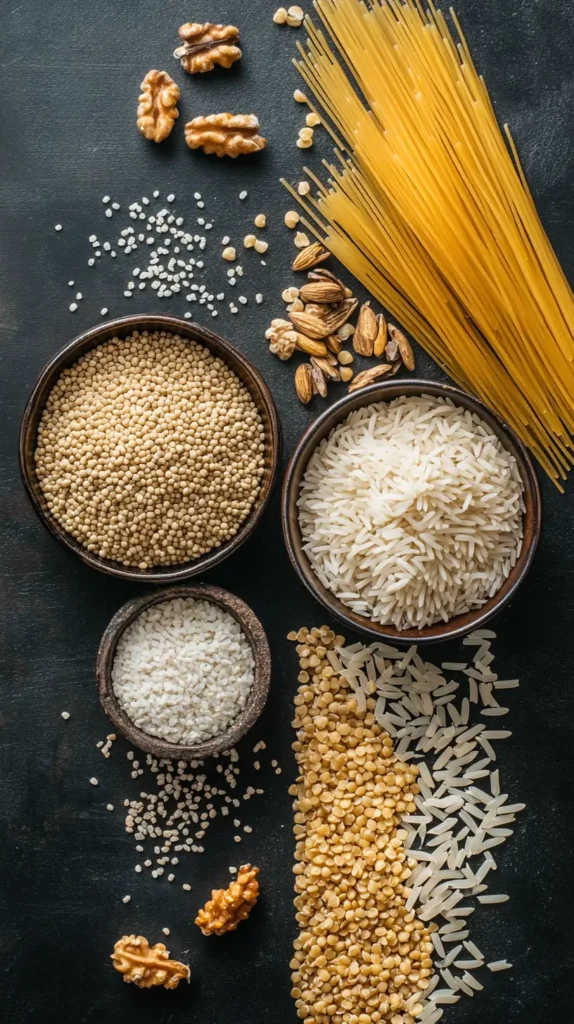
Kasha and Blood Sugar Levels
Glycemic Index and Kasha
The glycemic index (GI) of kasha is moderate, around 50. Foods with a GI below 55 are considered less likely to cause rapid blood sugar spikes. Kasha’s fiber content also slows digestion, making it a more stable carbohydrate source.
For individuals wondering is kasha low in carbs and suitable for managing blood sugar, its moderate GI and nutritional benefits make it a reasonable choice when consumed in moderation.
Kasha’s Role in Managing Diabetes
Kasha’s combination of complex carbohydrates, fiber, and magnesium supports blood sugar management. Magnesium helps regulate insulin sensitivity, while fiber promotes slower glucose absorption. Including kasha in a balanced diet can provide nutritional benefits for those with diabetes while keeping carb intake in check.
Is Kasha a Good Choice for Weight Loss?
Role of Kasha in Calorie-Controlled Diets
Kasha can be a smart addition to a weight-loss plan, especially for those following a calorie-controlled diet. A 100-gram serving of cooked kasha contains just around 92 calories, yet it’s packed with essential nutrients like vitamins, minerals, and fiber. This makes it a high-nutrient, low-calorie food that supports satiety without excess energy intake. For those wondering whether kasha is low in carbs and weight-loss friendly: its moderate carbohydrate content and naturally low calorie count make it a solid choice—particularly when portion sizes are kept in check.
Satiety Benefits of Kasha
Kasha’s fiber and protein content contribute to prolonged satiety, helping to reduce hunger between meals. This can prevent overeating and support weight loss goals. Pairing kasha with high-protein or high-fiber ingredients, such as grilled chicken or leafy greens, further enhances its role in a balanced diet.
Alternatives to Kasha for Low-Carb Diets
Other Low-Carb Grains
While kasha has moderate carb levels, there are other grains with lower carbohydrate content, such as:
- Cauliflower rice: Virtually carb-free and highly versatile.
- Shirataki rice: Extremely low in carbs and calorie-free.
- Chia seeds: High in fiber and low in net carbs when hydrated.
These options provide variety for those exploring whether is kasha low in carbs fits their needs.
Non-Grain Substitutes for Kasha
For those seeking non-grain substitutes, consider:
- Riced vegetables: Broccoli rice or cauliflower rice mimic the texture of grains.
- Spaghetti squash: A low-carb alternative for dishes requiring a grain-like base.
- Zoodles (zucchini noodles): Perfect for pairing with savory toppings.
These alternatives are excellent for individuals prioritizing low-carb options over traditional grains like kasha.
Tips for Buying and Storing Kasha
Choosing the Best Quality Kasha
When purchasing kasha, look for:
- Organic options: Free from pesticides and additives.
- Whole, unprocessed kasha: Provides maximum nutrients and flavor.
- Certified gluten-free brands: Essential for those with celiac disease or gluten intolerance.
Reading labels carefully ensures you select the highest quality kasha for your dietary needs, especially when evaluating is kasha low in carbs.
Proper Storage Techniques
To maintain freshness, store kasha in an airtight container in a cool, dry place. For extended shelf life, keep it in the refrigerator or freezer. Proper storage preserves its nutty flavor and nutritional integrity, ensuring it remains a valuable component of your diet.
FQAS
Can I Eat Buckwheat on a Low-Carb Diet?
Yes, you can eat buckwheat (kasha) on a low-carb diet, but portion control is essential. Buckwheat contains approximately 19.9 grams of carbohydrates per 100 grams when cooked. While it’s not as low in carbs as some substitutes like cauliflower rice, its high fiber content reduces net carbs to about 17 grams per 100 grams. Including small portions of buckwheat paired with low-carb vegetables and healthy fats can make it suitable for moderate low-carb diets. However, for strict ketogenic diets, it might be challenging to fit into daily carb limits.
Which Type of Rice Is Lowest in Carbs?
Among common rice varieties, wild rice and black rice (forbidden rice) are typically the lowest in carbs. A 100-gram serving of cooked wild rice contains about 21 grams of carbohydrates, which is lower than white or brown rice, which typically have 28 grams or more. Additionally, wild rice is rich in fiber, further reducing net carbs and making it a better option for low-carb diets.
Is Kasha Healthier Than Rice?
Kasha is generally considered healthier than rice due to its higher nutrient density. It provides:
- More fiber, which supports digestion and stabilizes blood sugar levels.
- Higher levels of protein, offering a more balanced macronutrient profile.
- Important minerals like magnesium and zinc, which are less abundant in rice.
When comparing carbs, kasha (19.9 grams per 100 grams) has fewer than white rice (28 grams per 100 grams) and slightly fewer than brown rice (22 grams per 100 grams). This makes kasha a nutrient-dense alternative to rice, particularly for those monitoring carb intake.
What Is the Lowest Carbs in Potatoes?
The potato variety with the lowest carbs is the Carisma potato, a type of white potato specifically bred for a lower glycemic index. It contains about 15 grams of carbohydrates per 100 grams, which is lower than standard white potatoes that average 20 grams of carbs. Another option is the sweet potato, which, although higher in total carbs (around 17 grams per 100 grams), offers more fiber, reducing net carbs slightly. To further reduce carbs, consider smaller serving sizes or cooking methods like boiling, which can help lower the glycemic load.
Conclusion
Is Kasha Low in Carbs?
Kasha is not the lowest-carb option but strikes a balance between carbohydrates and nutritional benefits. With around 19.9 grams of carbs per 100 grams, it’s a moderate-carb food that can fit into many dietary frameworks when portion sizes are controlled.
Final Thoughts on Incorporating Kasha into Your Diet
Kasha’s unique blend of nutrients, moderate carb content, and versatility make it a valuable addition to various diets. Whether you follow a low-carb plan, prioritize gluten-free options, or seek nutrient-dense foods, kasha offers plenty of benefits. By understanding its carb content and preparing it thoughtfully, you can enjoy its nutty flavor and health advantages while staying aligned with your dietary goals.

